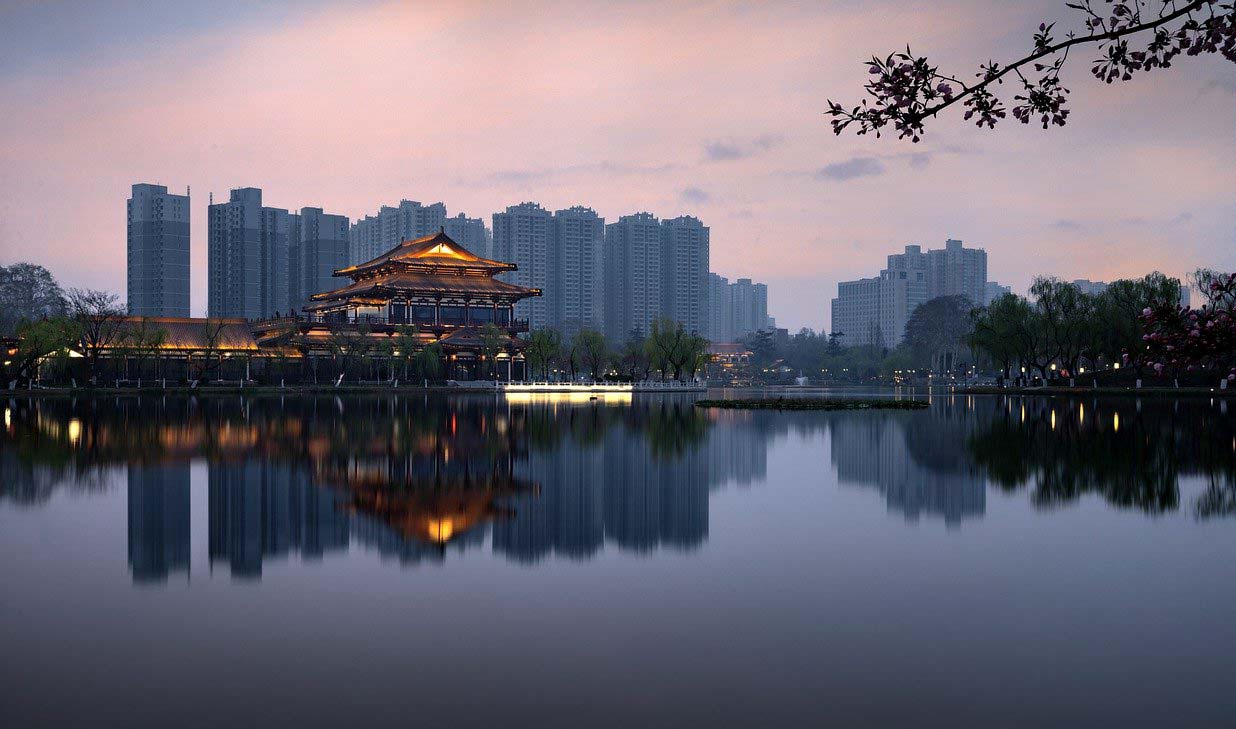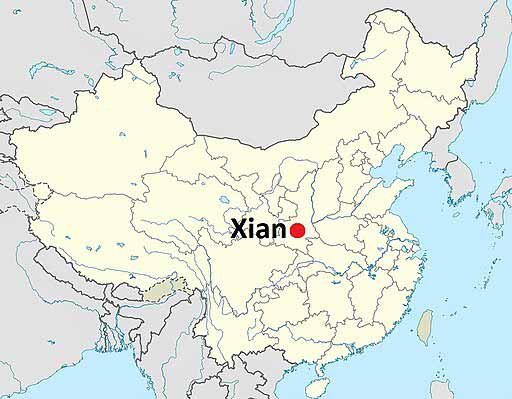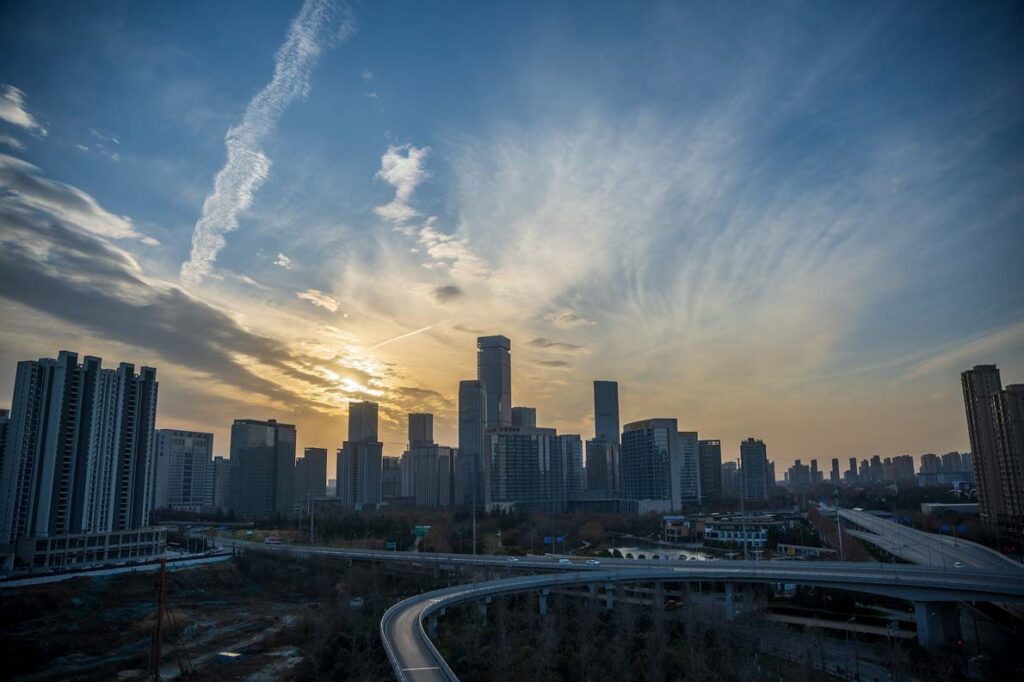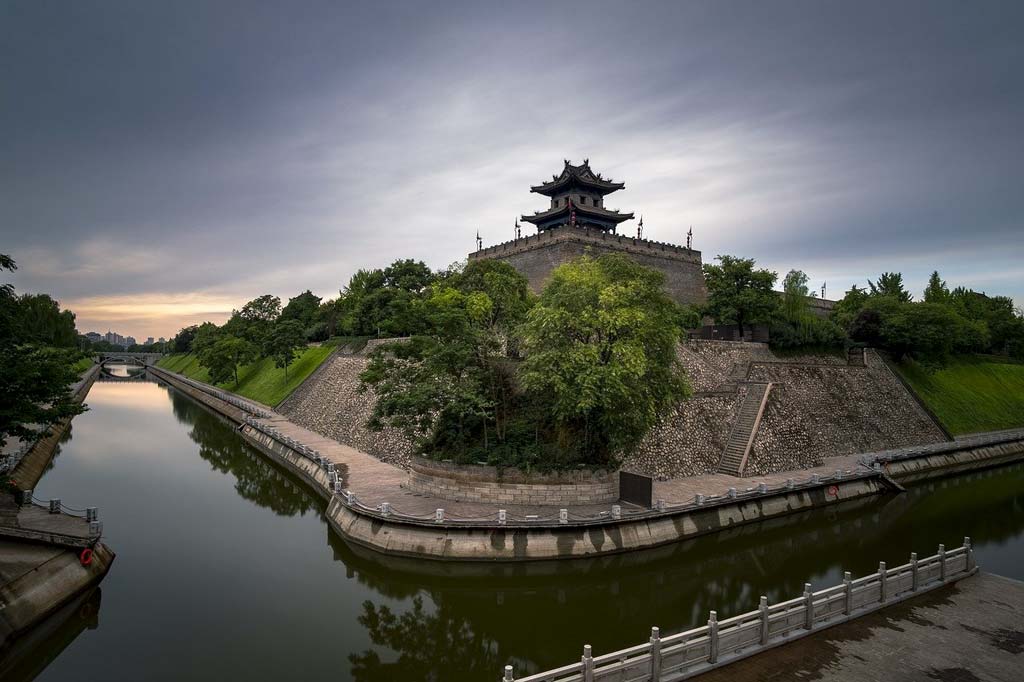


Welcome to Xi’an, a city rich in history and culture! Whether you’re planning a visit or simply curious about this fascinating place, we’ve got you covered. Xi’an, located in the northwest part of China, holds a special place in the nation’s history and heritage. With its ancient city walls, magnificent pagodas, and legendary Terracotta Army, Xi’an offers an incredible journey through time. So, let’s dive in!
Located in the northwest part of China, Xi’an is nestled in the heart of Shaanxi Province. It sits on the Guanzhong Plain, surrounded by the magnificent Qinling Mountains to the south and the Wei River to the north. This strategic location made Xi’an a vital hub for trade and cultural exchange throughout history. Situated at the eastern end of the Silk Road, Xi’an served as a gateway between East and West, fostering the exchange of ideas, goods, and cultures.


Xi’an proudly serves as the capital of Shaanxi Province. As the largest province in Northwest China, Shaanxi is renowned for its historical significance and cultural heritage. It is home to a wealth of ancient treasures, including Xi’an’s world-famous Terracotta Army.
Shaanxi Province encompasses diverse landscapes, from the majestic Qinling Mountains to the vast Loess Plateau, providing a breathtaking backdrop to Xi’an’s historical splendor.
Absolutely! Xi’an holds the distinguished title of being the capital city of Shaanxi Province. Its historical legacy, strategic location, and cultural prominence have solidified its position as the political, economic, and cultural heart of the province. As the capital, Xi’an plays a vital role in governance and administration, hosting government institutions, business headquarters, and prestigious educational institutions.

Xi’an is a vibrant metropolis, home to around 6 million people. As one of China’s largest cities, Xi’an has experienced significant population growth due to urbanization and economic development. The city’s population has boomed over the years, attracting people from all walks of life seeking opportunities in education, employment, and entrepreneurship. The diverse population contributes to the city’s dynamic atmosphere, creating a melting pot of cultures and traditions.
Spanning an impressive area of approximately 10 752 square kilometers (4 152 square miles), Xi’an is a city of considerable size. To put it into perspective, Xi’an’s land area is comparable to the size of the U.S. state of Connecticut.
The city’s vast expanse encompasses both urban areas and surrounding suburbs, offering diverse landscapes and attractions. From the ancient city walls that enclose the historic center to the modern skyscrapers that dot the skyline, Xi’an showcases a blend of tradition and modernity across its expansive territory.

Xi’an experiences a temperate continental climate with distinct seasons. Spring and autumn are the most pleasant seasons, characterized by mild temperatures and moderate rainfall. During spring (March to May), the city comes alive with blooming cherry blossoms and a vibrant atmosphere.
Autumn (September to November) blesses Xi’an with pleasant temperatures, clear skies, and stunning foliage. Summers (June to August) can be hot and humid, with temperatures occasionally reaching over 35°C (95°F).
Winters (December to February) are cold and dry, with temperatures dropping below freezing. It’s advisable to check the weather forecast before visiting Xi’an to ensure a comfortable experience and to pack accordingly.

Yes, Xi’an does receive snowfall during the winter months. While snow is not as common as in some northern regions of China, Xi’an still experiences occasional snowfall that adds a touch of enchantment to the city. Snowfall patterns can vary from year to year, with some winters witnessing heavier snowfalls than others. When snow blankets the city, it transforms Xi’an into a winter wonderland, creating picturesque scenes around historical landmarks such as the ancient city walls and the Big Wild Goose Pagoda.
The pronunciation of Xi’an can be a bit tricky for non-Chinese speakers. It is pronounced as “shee-ahn,” with the emphasis on the first syllable “shee” and a soft “ahn” sound at the end. The “x” in Xi’an is pronounced as a combination of “sh” and “s” sounds, while the apostrophe represents a slight pause between the syllables.
When pronouncing “shee,” imagine pronouncing the “sh” sound as in “shoe” but with your lips slightly rounded. The “ee” sound is similar to the “ee” sound in “bee.” Lastly, the “ahn” sound is produced by opening your mouth wide while making a short “a” sound, followed by a nasal “n” sound.

Mandarin Chinese is the official language spoken in Xi’an, as it is throughout China. The standard form of Mandarin, known as Putonghua, is widely understood and used for official purposes, education, and media.
However, due to Xi’an’s diverse cultural heritage, you may also encounter various local dialects and accents. These dialects add linguistic diversity and reflect the city’s historical and cultural richness. While basic Mandarin phrases will suffice for most interactions, locals appreciate any effort made to communicate in their local dialects, such as Shaanxi dialect or Xi’an dialect.
Xi’an is famous for its rich history and cultural heritage. It served as the capital city of numerous ancient dynasties, including the Qin, Han, and Tang, leaving behind a wealth of historical treasures. Xi’an is renowned for its ancient city walls, which stand as a symbol of the city’s resilience and grandeur. These well-preserved fortifications enclose the historic city center and offer panoramic views of Xi’an’s bustling streets and architectural marvels.
The Giant Wild Goose Pagoda is a magnificent symbol of the city’s spiritual heritage. This ancient Buddhist pagoda, built in the Tang Dynasty, showcases the elegance of traditional Chinese design. With its intricate carvings and serene atmosphere, the pagoda invites visitors to immerse themselves in its rich history and profound spiritual aura. Surrounded by the tranquil Da Ci’en Temple complex, the Giant Wild Goose Pagoda stands as a testament to Xi’an’s cultural legacy and continues to captivate travelers from all over the world.
Another icon that has put Xi’an on the global map is the Terracotta Army. Discovered in 1974, this vast underground army, composed of thousands of intricately crafted terracotta soldiers, horses, and chariots, was built to accompany China’s first emperor, Qin Shi Huang, in the afterlife. The Terracotta Army stands as a testament to the incredible craftsmanship and engineering of the Qin Dynasty, offering a fascinating glimpse into ancient Chinese military history.
In the next section we will be delving further into Xi’an’s iconic Terracotta army so be sure to stay tuned!


The Terracotta Army, one of the most iconic attractions in Xi’an, continues to captivate visitors from around the world. Discovered by local farmers, this archaeological marvel was unearthed near Emperor Qin Shi Huang’s mausoleum. The Terracotta Army consists of life-sized sculptures meticulously crafted to resemble soldiers, each with unique facial expressions and intricate details.
The discovery of the Terracotta Army in 1974 shocked the world, uncovering an army of astonishing scale and craftsmanship. The army’s purpose was to protect Emperor Qin Shi Huang in the afterlife, as he sought to recreate his military might beyond the mortal realm.
Today, visitors can explore the excavation site and marvel at the sheer magnitude and artistry of the Terracotta Army, gaining invaluable insights into ancient Chinese history and the Qin Dynasty’s cultural achievements.

When it comes to food, Xi’an boasts a remarkable culinary scene that tantalizes taste buds with a fusion of flavors. One dish that stands out and has gained international fame is the world-renowned “Xi’an Biang Biang Noodles.” These wide and thick hand-pulled noodles are typically served with a variety of savory sauces, chili oil, and an array of toppings, such as braised meat or vegetables. Biang Biang Noodles offer a delightful combination of chewy texture and rich flavors, making them a must-try when in Xi’an.
In addition to Biang Biang Noodles, Xi’an is also known for its delectable “Roujiamo” or Chinese hamburger. These savory sandwiches feature a crispy and fluffy bread bun stuffed with tender braised meat, often accompanied by flavorsome spices and herbs. Roujiamo satisfies both hunger and curiosity, showcasing the city’s culinary creativity and serving as a testament to Xi’an’s rich street food culture.



Xi’an, with its rich historical legacy, cultural splendor, and delectable cuisine, is a city that leaves a lasting impression on visitors. From the awe-inspiring Terracotta Army to the vibrant street food scene, Xi’an offers a tapestry of experiences that cater to all interests. As you explore the ancient city walls, visit grand temples, and savor the flavors of Xi’an’s renowned dishes, you’ll come to appreciate the city’s unique blend of tradition and modernity.
So, whether you’re planning a trip or simply expanding your knowledge, Xi’an awaits you with open arms, ready to share its secrets and stories. Discover the wonders of Xi’an, and create unforgettable memories in this captivating city!

If you enjoyed this article and would like to see a similar one please click here to see our article on Suzhou FAQs: Exploring the Venice of the East!
And lastly, if you would like to read our article where we compile the largest cities in China please click here to see The 15 largest cities in China!